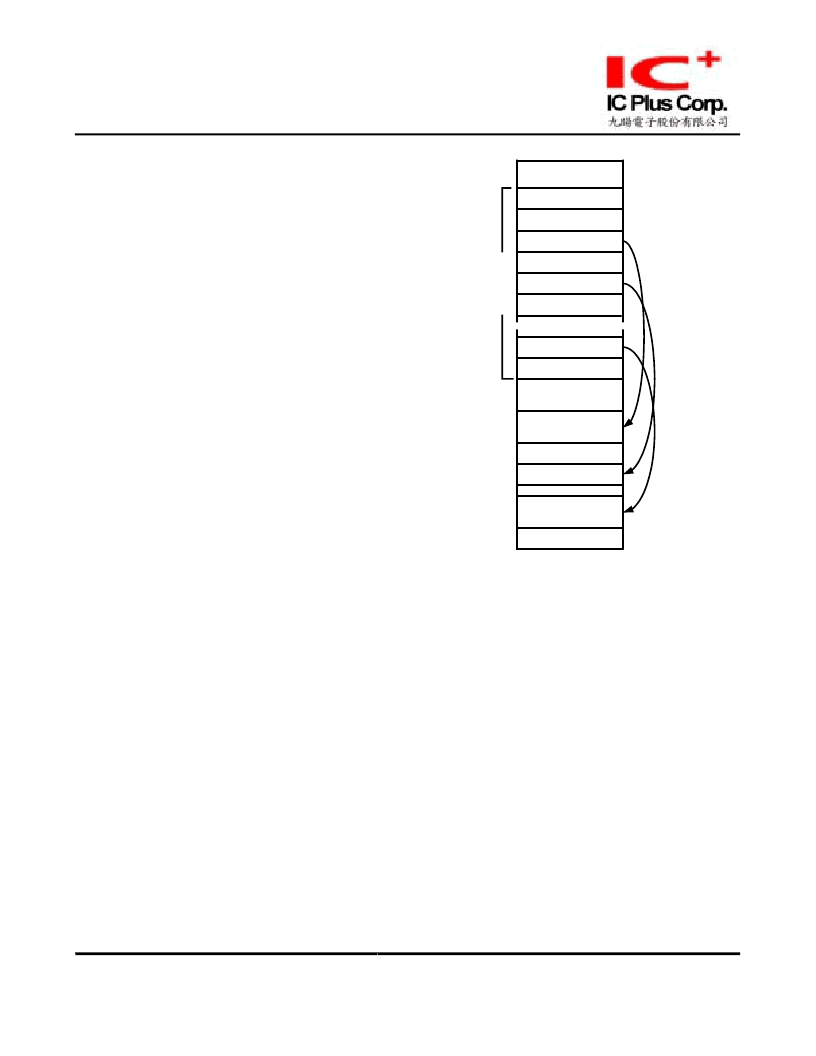
IP100
been transferred by TxDMA when the host system
enters its interrupt service routine. The host system
can traverse the list of TFD’s, examining the
TxDMAComplete bit in each TFD to determine
which frames have been transferred by TxDMA.
The IP100 fetches the TFC before frame data
transfer, and again at the end of TxDMA operation
to examine the TxDMAIndicate bit. This allows the
host system to change TxDMAIndicate while data
transfer of the frame is in progress. For instance, a
frame’s TFD might be at the end of the TxDMAList
when it starts TxDMA, so the host system would
probably set TxDMAIndicate to generate an
interrupt. However, if during the TxDMA process of
this frame, the host system added a new TFD to the
end of the list, it might clear TxDMAIndicate in the
currently active TFD so that the interrupt is delayed
until the next TFD.
The IP100 has the ability to automatically round up
the length of a transmit frame. This is useful in some
NOS environments in which frame lengths need to
be an even number of words. The frame length is
rounded up to either a word or dword boundary,
depending upon the value of WordAlign. Host
systems may disable frame length word-alignment
by
setting
the
WordAlign
TransmitFrameControl to x1.
The MAC will initiate frame transmission (if
transmission is enabled) as soon as either the entire
frame is resident in the TxFIFO register.
As a frame transmits out of the TxFIFO, it is
desirable to be able to release the FIFO space so
that it may be used for another frame. The value
programmed into TxReleaseThresh determines how
much of a frame must be transmitted before its FIFO
space can be released.
6.4
Frame Reception and RxDMA
IP100-DS-R03
May 27, 2003
13/92
Copyright
2003, IC Plus Corp.
All rights reserved.
HOST SYSTEM MEMORY
RxDMANextPtr
RxFrameStatus
1st RxDMAFragAddr
1st RxDMAFragLen
2nd RxDMAFragAddr
2nd RxDMAFragLen
Last RxDMAFragAddr
Last RxDMAFragLen
1st Data Frag (Buffer)
RFD
2nd Data Frag (Buffer)
Last Data Frag (Buffer)
bits
in
the
FIGURE 6: RxDMA Data Structure
The RFD format is covered in the Registers and
Data Structures section.
Similar to TFDs, the resulting linked list of RFDs is
referred to as the RxDMAList. One option available
to RxDMA that differs from TxDMA is that the
RxDMAList can be formed into a ring as shown in
Figure 7. A host system can allocate a number of
full size frame buffers, create a RFD for each one,
and link the RFDs into a circular list. As frames are
received
and
transferred
RxDMAComplete interrupt will be generated for
each frame.
by
RxDMA,
a
The frame RxDMA mechanism is similar to the
TxDMA mechanism. RxDMA is structured around a
linked list of frame descriptors, called RFDs. RFDs
contain pointers to the fragment buffers into which
the IP100 is to place receive data, as shown in
Figure 6.
Preliminary, Specification subject to change without notice.
